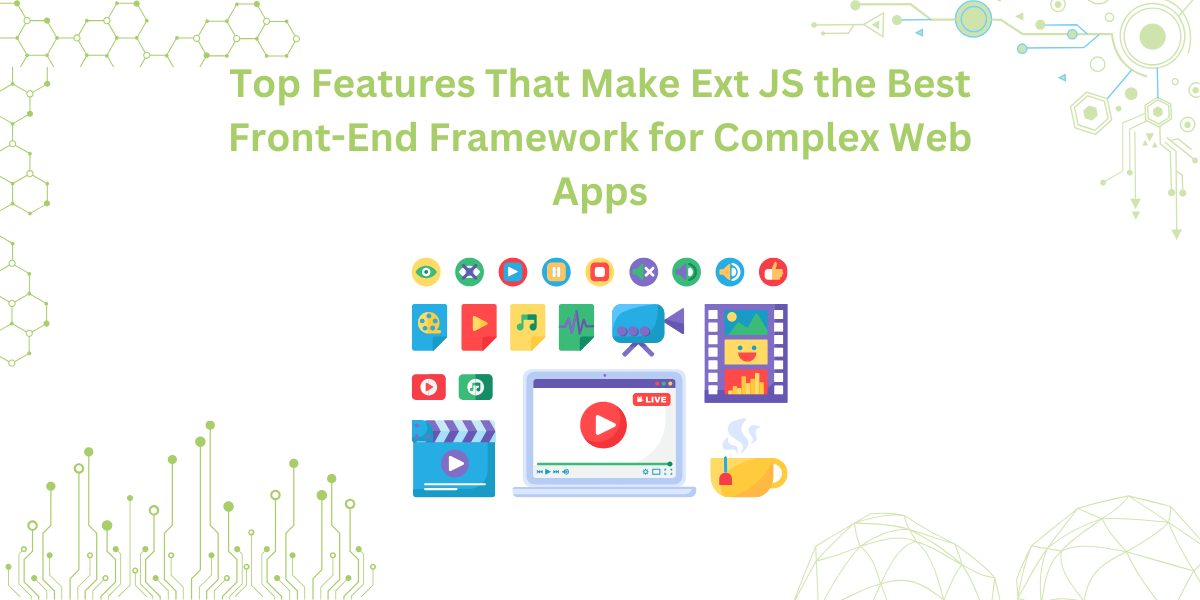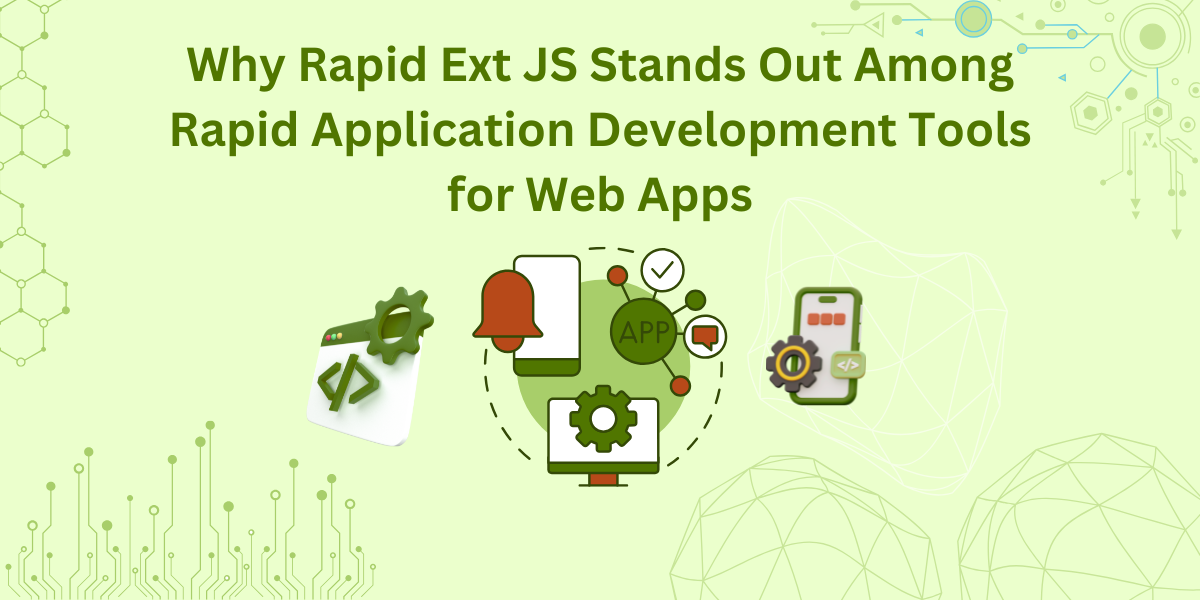Enterprise Software Development: 6-Steps Process That Works
Enterprise applications are essentially software systems designed to support and automate the operations, processes, and data management of large organizations. These apps are crucial for managing the complex and large-scale activities of businesses. However, enterprise software development is a complex and time-consuming process. Many beginners often ask, what is enterprise application development, and the answer lies in building scalable, secure, and efficient applications tailored for enterprise needs.
These applications need to handle high traffic or a large number of users. Thus, performance optimization is crucial to ensure smooth operation under heavy load. Moreover, these applications need to be tailored to specific business needs and processes.
Thus, they must be flexible enough to adapt to changing requirements. C Level Guide. Fortunately, by using the right tools and JavaScript frameworks and following best practices, developers can build high-performance, large-scale enterprise applications with ease.
For instance, developers worldwide use a framework like Ext JS for enterprise app development. In this blog, we will explore a 6-step enterprise application development process that can help you build high-performance enterprise apps.
Let’s first understand the difference between traditional and modern enterprise software development.
What is Enterprise Software?
Enterprise software is essentially a software application that meets the specific needs of large organizations. These apps are designed to support and enhance various business processes, such as:
- Finance
- Human resources
- Customer relationship management (CRM)
- Supply chain management
- Enterprise resource planning (ERP)
Today, enterprise apps are an essential part of all modern large organizations. These apps help organizations in various ways:
- Automate different business processes and tasks, such as reporting, data collection, etc., saving time and improving productivity.
- Provide a centralized management system.
- Provide real-time data and analytics, enabling businesses to make informed decisions.
Difference Between Regular and Enterprise Software Development
Here are some differences between both approaches:
Regular Software Development
- These software solutions are usually generic.
- Designed for small to medium-sized businesses or individual departments within a large organization.
- Examples include basic accounting software, simple project management tools, and standard office productivity suites.
- Focuses on specific and more straightforward tasks. For example, a simple accounting software used by a small business might handle invoicing, payroll, and basic financial reporting.
- Suitable for small-scale operations that involve limited users and data. It may not be able to handle the demands of a rapidly growing business.
- These solutions often have limited integration capabilities. They also often require manual data entry between different tools.
Enterprise Software Development
- Designed for large organizations.
- Examples include ERP (Enterprise Resource Planning) systems, CRM (Customer Relationship Management) systems, and SCM (Supply Chain Management) systems.
- Provides a wide range of complex functionalities required to meet the diverse needs of an entire organization. This includes integrated modules for finance, supply chain management, HR, sales, marketing, and more, all within a single system.
- Enterprise software development focuses on scalability. These systems are built to scale efficiently and manage large volumes of data, transactions, and users.
- Integrates seamlessly with other enterprise systems. These systems support complex workflows and data exchanges across the organization.
Enterprise Software Development Examples
Enterprise Resource Planning (ERP) Software
ERP software is designed to manage the core business processes in real-time. It centralizes data from various departments. This ensures a constant flow of information and coordination across the entire organization. ERP systems typically include modules for:
- Finance
- Human resources
- Manufacturing
- Supply chain
- Services
- Procurement, and more.
Customer Relationship Management (CRM) Systems
These systems manage a company’s interactions with customers, including current and potential customers. They basically consolidate customer information into a single database. They help businesses:
- Build customer relationships
- Streamline processes
- Increase sales
- Improve customer service
Supply Chain Management (SCM) Systems
These systems help organizations manage the flow of goods, information, and finances throughout the supply chain cycle. SCM systems help businesses
- Improve efficiency
- Reduce costs
- Ensure timely delivery of products.
What are Enterprise Software Development Challenges?
Integration with Legacy Systems
Legacy systems are outdated software applications that have been used for a long time. These systems may have limited functionality, poor performance, and security vulnerabilities. Moreover, these systems often lack compatibility with modern technologies. Hence, integrating them with modern enterprise applications is challenging.
Poor Collaboration Between Business and IT
Collaboration is crucial for creating effective apps for businesses. Both the business and IT teams need to work together. There’s a problem when business and IT strategies don’t match. Moreover, it gets tough to satisfy the organization’s requirements. Business teams may have unrealistic expectations. On the other hand, IT teams may struggle to deliver solutions that align with the business goals. This misalignment can result in delays, rework, and inefficient use of resources.
Developer Shortage
The demand for skilled software developers often exceeds the available supply. Numerous organizations encounter difficulties in recruiting and retaining skilled developers.
Lack Of Organizational Agility
Organizational agility refers to an organization’s ability to respond quickly and effectively to customer needs. Inflexible organizations may struggle to adapt to evolving requirements.
Download WhitePaper: Building Data-Intensive Applications To Accelerate Enterprise Growth
6-Step Enterprise Software Development Process
The 6-step enterprise Software development platforms typically include the following stages:
Requirement Gathering
This initial phase involves gathering and documenting detailed requirements for the enterprise software. It includes understanding the purpose for developing the software, business goals, user needs, and functional requirements. The development team interacts with stakeholders, conducts interviews, and performs analysis to define the software’s scope, key features, and specifications.
Planning And Alignment
This phase creates a detailed project plan outlining the features, development approach, timelines, resource allocation, and milestones. The plan ensures alignment between the development team, stakeholders, and project objectives. It includes establishing communication channels, defining roles and responsibilities, and identifying potential risks and mitigation strategies.
Here are the key features that an enterprise app must have:
Security
Enterprise app development platforms should prioritize security measures to protect sensitive customer and company data. Depending on the industry you’re operating in, you may be bound by the law to comply with regulations like GDPR and HIPAA. Security features must include:
- Secure authentication
- Data encryption
- Role-based access control
- Compliance with industry standards and regulations.
Scalability
Organizations must build applications that can handle increasing user loads, data volumes, and transactional demands. Moreover, enterprise apps must be designed to scale as the business and user base grow.
Integration
An effective app must have robust data integration capabilities. It should seamlessly integrate with existing business systems such as CRM and other critical applications.
Reporting and Analytics
Reporting and analytics features are essential for custom enterprise software. These features enable decision-makers to gain insights from the data collected by the applications.
Cloud Access
With the increasing adoption of cloud computing, an enterprise app development platform should offer seamless integration with cloud solutions.
UI/UX Design
This step focuses on creating an intuitive and user-friendly interface for the enterprise software. Designers work on wireframes, prototypes, and visual designs that align with the requirements and user expectations. Moreover, the UI/UX design considers:
- Usability
- Accessibility
- Branding
This helps deliver a visually appealing user experience. Here, you can leverage a front-end development framework for creating stunning, interactive, and functional UI. Ext JS is an example of a framework that developers worldwide use for enterprise software development.
Key Reasons Why Ext JS Is A Great Choice For Enterprise Software Development:
Build Scalable Apps
Ext JS provides a robust foundation for building scalable enterprise applications. It offers 140+ pre-built and fully tested high-performance UI components. Moreover, it supports both MVC and MVVM architectures, allowing you to build scalable enterprise-level apps.
Increased Productivity
Ext JS offers a low-code development approach. This low-code approach speeds up the development process and saves time. Moreover, Ext JS supports cross-browser and cross-platform development. This means developers don’t have to create a separate codebase for different platforms and browsers.
Robust Data Handling
Ext JS provides powerful data management capabilities. These include models, data stores, and proxies. These features help with efficient handling of large datasets. Moreover, Ext JS offers a robust data grid for developing data-intensive enterprise-grade apps. Features like sorting, filtering, and paging are built-in, making it easier to manage complex data sets.
Responsive Design
The framework supports responsive design principles. This ensures that applications look and function well on various devices and screen sizes. For example, layout managers and flexible grids help create adaptive UIs.
Enterprise-Grade Features
Features like drag-and-drop support, advanced grid functionality, and sophisticated form handling make Ext JS a great choice for building complex enterprise applications. The framework is designed to handle large-scale applications with heavy data requirements.
Comprehensive Documentation and Support
Ext JS has extensive documentation containing all the details about the framework’s features and capabilities, as well as various coding examples. You can also contact Sencha support for expert help.
Enterprise Software Development
This stage involves the actual development of the enterprise software. Developers write the code and integrate necessary components and modules. Moreover, they implement the desired features and functionalities.
There are two common modern ways to build apps:
Low Code
Low-code development uses a visual development environment. It provides a set of pre-built components and drag-and-drop interfaces. Developers can rapidly build applications by visually configuring and connecting these components. Thus, this approach requires minimal coding. Best low code development platforms often provide tools for database integration, user interface design, and business logic implementation. Low Code development accelerates the mobile app and development process, reducing the need for extensive coding and enabling faster iteration and deployment of applications.
No Code
This development takes the concept of Low Code further by allowing users to create applications without writing any code at all. These platforms provide intuitive interfaces and pre-built templates. Moreover, they enable users to design, build, and deploy applications through visual interfaces and configurations. Users can create custom applications using drag-and-drop functionality, form builders, and workflow builders. No Code development empowers users with little coding experience to create functional applications.
Testing & Deployment
Software testing is a crucial part of enterprise software development. It helps ensure that the software works as intended and meets specific requirements. There are various types of testing, including:
- Unit testing
- Integration testing
- End-to-end testing
- System testing
- User acceptance testing (UAT)
Maintenance & Support For Enterprise Application Development
After deployment, the enterprise software requires ongoing maintenance and support. This includes addressing reported issues or bugs and releasing updates and patches. Hence, providing technical support to end users.
Conclusion
In this article, we’ve outlined a comprehensive 6-step process for enterprise software development. From gathering requirements to designing and testing the software, each phase is crucial for delivering high-performance and scalable applications. Many business leaders often ask, What is enterprise level application, and the answer lies in software built to handle complex, large-scale business operations with reliability and efficiency.
Leveraging modern frameworks and methodologies like agile, cloud solutions, and low-code/no-code platforms ensures that enterprise applications meet evolving business needs.
Custom enterprise software, such as ERP and CRM systems, plays a critical role in streamlining business operations and improving productivity. By following best practices and choosing the right tools, organizations can build secure, reliable, and adaptable software to support their growth and success.
FAQs
1. HOW IS ENTERPRISE SOFTWARE DEVELOPMENT CHANGING?
Enterprise software development is evolving rapidly due to the increasing adoption of cloud-based solutions, AI integration, and the rise of low-code/no-code development platforms. These innovations have made it easier to develop scalable and secure enterprise software.
2. HOW LONG DOES IT TAKE TO DEVELOP ENTERPRISE SOFTWARE?
The time to develop enterprise software depends on its complexity, features, and integration requirements. Typically, it can take several months to years for large-scale enterprise applications.
3. WHAT IS ENTERPRISE SOFTWARE DEVELOPMENT IN THE CLOUD?
Enterprise software development in the cloud refers to building applications hosted on cloud platforms like AWS, Azure, or Google Cloud. This allows businesses to take advantage of scalability, flexibility, and cost-efficiency.
4. WHAT IS A FULL-STACK ENTERPRISE SOFTWARE DEVELOPER?
A full-stack enterprise software developer is someone who can work on both the front-end (user interface) and back-end (server-side) components of enterprise applications, ensuring the seamless functioning of the entire system.
5. WHAT’S THE BEST PLATFORM TO DEVELOP ENTERPRISE SOFTWARE?
The best platform for enterprise software development depends on your specific needs. Popular platforms include AWS, Microsoft Azure, and Google Cloud for cloud-based development. Frameworks like Ext JS are also ideal for building scalable and data-intensive applications.
6. HOW TO CHOOSE THE RIGHT ENTERPRISE SOFTWARE DEVELOPMENT METHODOLOGY?
Choosing the right methodology depends on the project’s size, complexity, and timeline. Agile methodologies are popular for their flexibility, while Waterfall is suitable for well-defined projects with clear requirements.
7. HOW TO ENSURE SECURITY IN ENTERPRISE SOFTWARE DEVELOPMENT?
Security can be ensured through secure authentication, data encryption, role-based access control, and regular security audits. Compliance with industry regulations is also crucial.
8. WHAT IS THE ROLE OF DEVOPS IN ENTERPRISE SOFTWARE DEVELOPMENT?
DevOps practices help streamline the development and operations process. By automating workflows, testing, and deployment, DevOps enables faster delivery of updates and ensures continuous improvement.
9. WHAT IS THE DIFFERENCE BETWEEN ENTERPRISE SOFTWARE AND REGULAR SOFTWARE?
Enterprise software is designed for large organizations, supporting complex processes and multiple departments. Regular software is typically simpler and serves the needs of individuals or small businesses.
10. HOW TO IMPLEMENT AGILE METHODOLOGY IN ENTERPRISE SOFTWARE DEVELOPMENT?
Agile methodology can be implemented by breaking the development process into smaller iterations (sprints) and focusing on delivering incremental improvements. Regular feedback and collaboration between business and IT teams are key components.

Ext JS powers nearly 80% of enterprise apps built on a JavaScript framework. You often…

We’re thrilled to share a recap of JS Days 2025, our premier virtual JavaScript event,…

Businesses now rely on rapid application development tools for faster and scalable web apps. Rapid…









